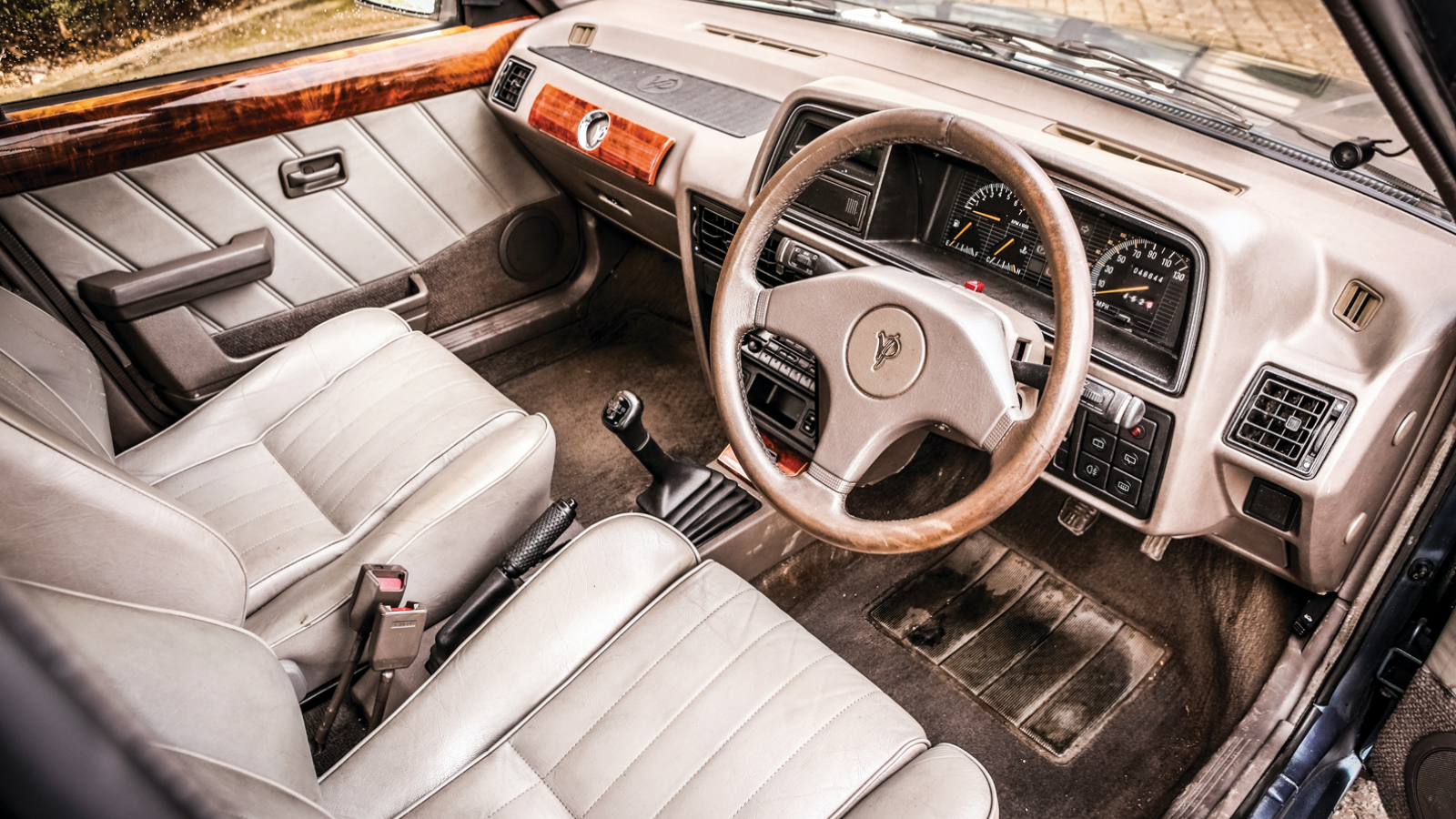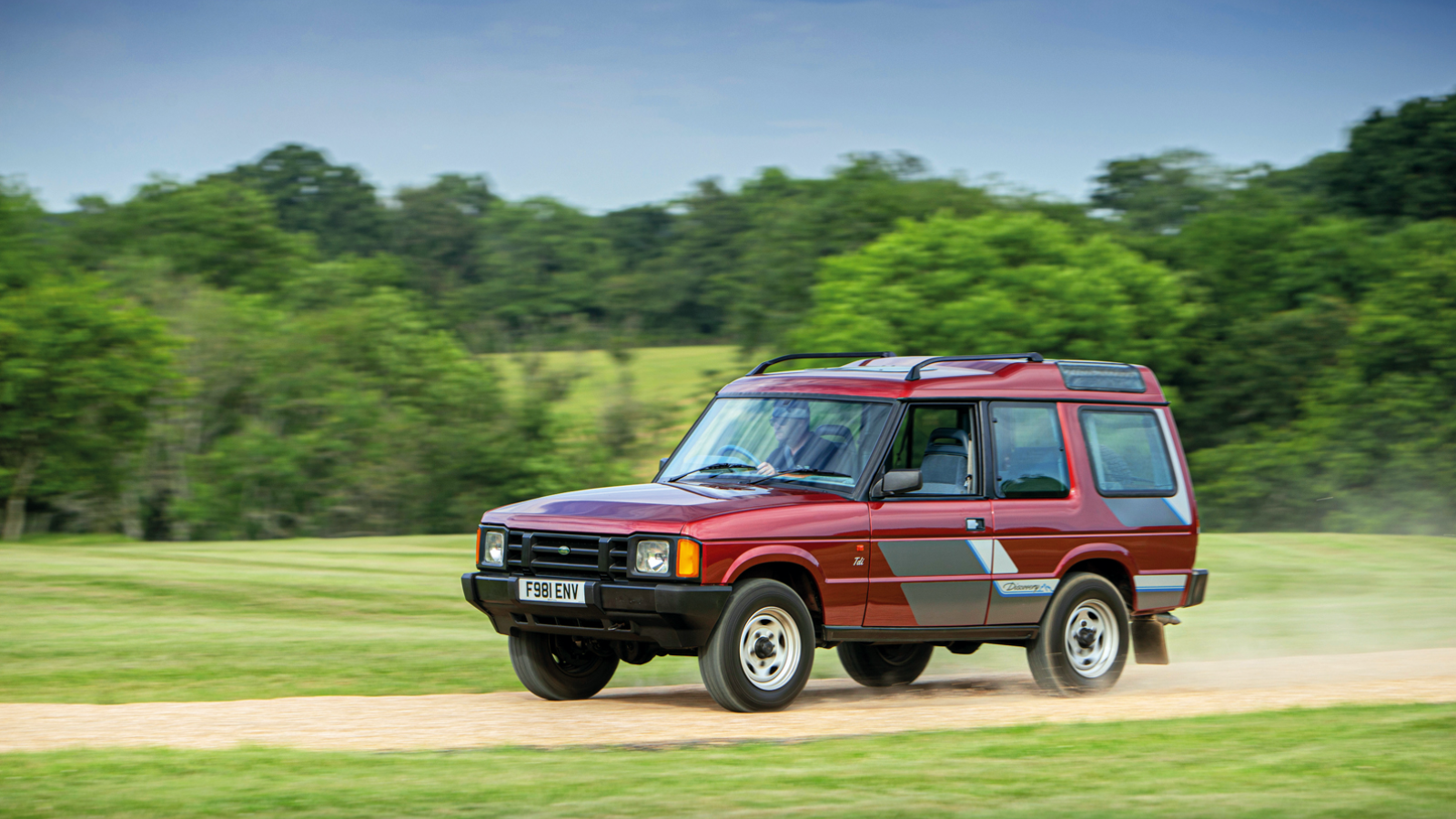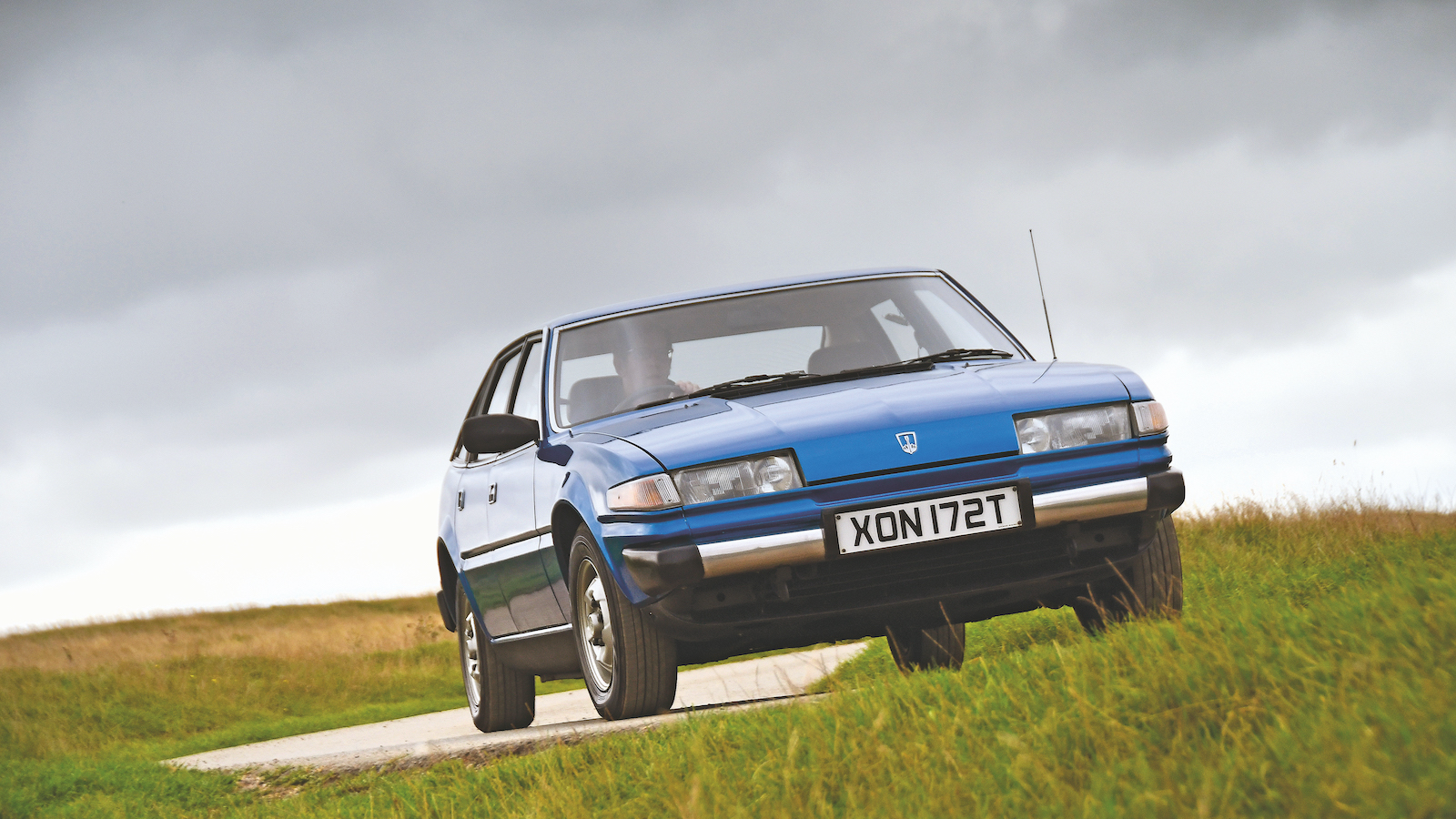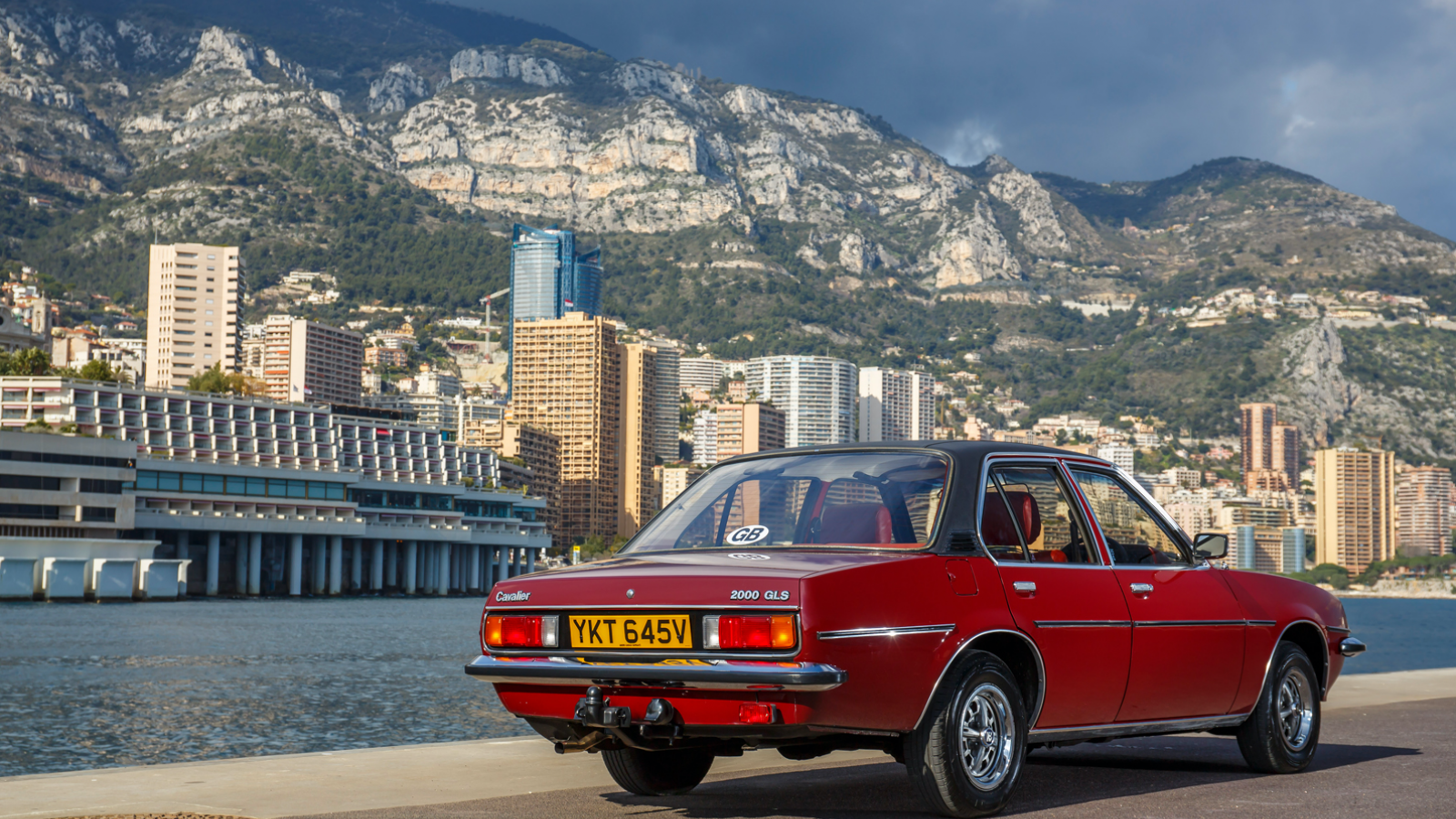-
 © John Bradshaw/Classic & Sports Car
© John Bradshaw/Classic & Sports Car -
 © Classic & Sports Car
© Classic & Sports Car -
 © Classic & Sports Car
© Classic & Sports Car -
 © Joost Bakker/Wikipedia
© Joost Bakker/Wikipedia -
 © Charles01/Wikipedia
© Charles01/Wikipedia -
 © Classic & Sports Car
© Classic & Sports Car -
 © Classic & Sports Car
© Classic & Sports Car -
 © Classic & Sportsd Car
© Classic & Sportsd Car -
 © Classic & Sports Car
© Classic & Sports Car -
 © Classic & Sports Car
© Classic & Sports Car -
 © Classic & Sports Car
© Classic & Sports Car -
 © Charles01/Wikipedia
© Charles01/Wikipedia -
 © Classic & Sports Car
© Classic & Sports Car -
 © Classic & Sports Car
© Classic & Sports Car -
 © Classic & Sports Car
© Classic & Sports Car -
 © Chrysler
© Chrysler -
 © Vauxford/Wikipedia
© Vauxford/Wikipedia -
 © Classic & Sports Car
© Classic & Sports Car -
 © Classic & Sports Car
© Classic & Sports Car -
 © Classic & Sports Car
© Classic & Sports Car -
 © Classic & Sports Car
© Classic & Sports Car -
 © Classic & Sports Car
© Classic & Sports Car -
 © Classic & Sports Car
© Classic & Sports Car -
 © Classic & Sports Car
© Classic & Sports Car -
 © Classic & Sports Car
© Classic & Sports Car -
 © Classic & Sports Car
© Classic & Sports Car -
 © Classic & Sports Car
© Classic & Sports Car -
 © Classic & Sports Car
© Classic & Sports Car -
 © Classic & Sports Car
© Classic & Sports Car -
 © Classic & Sports Car
© Classic & Sports Car -
 © Classic & Sports Car
© Classic & Sports Car -
 © Classic & Sports Car
© Classic & Sports Car -
 © Classic & Sports Car
© Classic & Sports Car -
 © Stellantis
© Stellantis -
 © Stellantis
© Stellantis -
 © Stellantis
© Stellantis -
 © Riley/Wikipedia
© Riley/Wikipedia
-
The game of the name
Badge engineering. It’s often thought of as a lazy way for car manufacturers to inject life into an uninspiring range – simply build a sporty version and give it a badge with competition or sporting equity, and watch the profits roll in. In theory.
However, badge engineering also allows automotive conglomerates to offer well-regarded, big-selling designs all around the world, with minimal changes and a new name designed to appeal to the local clientele.
Or if a car maker doesn’t have a presence somewhere, it can license complete knock-down (CKD) kits to local car makers, who build and sell the car to the customers. So they get all the profits with none of the hassle of actually screwing the vehicles together. Winner winner.
Here, we’ve gathered, in alphabetical order, 18 examples of British car makers making the most of badge engineering.
-
1. Austin 1100 (1963-’74)
Austin America (US), Austin Glider (The Netherlands), Innocenti Morris IM3 (Italy), Riley Kestrel/Wolseley 1100 (New Zealand)
The BMC ADO16 (Amalgamated Drawing Office) is one of the most successful British cars ever, because while it was built by the British Motor Corporation, it was sold by various brands under the BMC umbrella, so you’ll find it as the Austin 1100 and the Morris 1100.
Indeed, more than two million were sold before the car was phased out in favor of the Morris Marina and, later, the Austin Allegro.
-
Austin 1100 (cont.)
However, it wasn’t just popular in the UK. It was sold in the US as the Austin America, in Italy as the Innocenti Morris IM3 and IM3S, in The Netherlands as the Austin Glider, and in New Zealand as the Riley Kestrel and Wolseley 1100.
The car was designed by Alec Issigonis, the man who came up with the original Mini, and featured the then-revolutionary Hydrolastic suspension.
Buyers around the world lapped it up, but none more so than in the UK, where it was the most popular car on sale for the majority of its life.
-
2. Austin 1800 (1964-’75)
Austin Kimberley/Austin Tasman (Australia), Morris Kimberley/Morris Tasman (New Zealand)
Alec Issigonis was prolific in the 1960s. Not only did he come up with the original Mini, then the chart-topping Austin 1100, he followed them with the ADO17, which was the design-office name for the car that would become the Austin 1800, Morris 1800 and Wolseley 18/85.
When it came out in 1964 it was a properly groundbreaking design, with a huge glass area, vast cabin space and the newfangled Hydrolastic suspension system.
Indeed, it was so cutting-edge and competent that it was voted European Car of the Year in 1965.
-
Austin 1800 (cont.)
In 1970, a version of the car was built and sold in Australia and New Zealand as the X6 model.
In Australia these cars were named the Austin Kimberley and Austin Tasman, and in New Zealand as the Morris Kimberley and Tasman, and despite being almost six years old the design was still more modern and technologically advanced than the conventionally sprung rear-wheel-drive sedans that were being sold there at the time.
The engine used was a 2.2-liter straight-six mounted transversely, which made the car unique at the time.
However, the technical complexity of these models meant they never sold as well as the home-grown cars from Chrysler, Ford and Holden, whose simplicity made them cheaper to run and easier to fix.
-
3. Austin Seven (1923-’39)
BMW Dixi (Germany), Rosengart (France), Datsun Type 11 (Japan)
The ‘baby Austin’ was not only one of the most popular cars in the United Kingdom, but it also replicated that success around the world. But not as an Austin, because it was licensed to various car makers in other countries.
So, for example, in Germany it was the BMW Dixi (BMW’s first car), and in France it was a Rosengart.
In Japan, in 1932, there was the Datsun Type 11, which bore an uncanny resemblance to the Austin Seven, but there’s still some debate as to whether a license was granted for this.
-
Austin Seven (cont.)
Later, there was an agreement between the two companies in 1952 for Datsun to construct and sell the car, but only under the Austin name.
In a variation of the licensing agreement, Austin also shipped rolling chassis to Australia for local companies to fit bodywork to – the largest of these being the Holden brand.
However, numerous other small coachbuilders also constructed bodies for the Austin chassis, albeit on a lesser scale.
-
4. Austin A40 Farina (1958-’67)
Innocenti A40 (Italy)
When the Austin A40 Farina was launched in 1958, it was a thoroughly modern two-box design that had been penned by noted Italian design house Pininfarina (hence the Farina in the car’s name), and sold as a sedan and a wagon (Countryman).
It was also unusual in that, despite Austin having been merged into the British Motor Corporation (BMW) in 1952, the A40 Farina was marketed and sold purely as an Austin, whereas other vehicles produced by the corporation at the time tended to be sold under each brand.
-
Austin A40 Farina (cont.)
However, the car was sold under a different name elsewhere. In Italy, Innocenti started off producing kit versions of the car before eventually going on to build and sell the car entirely.
And Innocenti didn’t stop there. It decided to improve things, so it designed a new rear hatchback for the Combinata (wagon) model, and fitted a more powerful 1098cc engine, resulting in the A40S, making it an early example of a hot hatch.
-
5. Austin Allegro (1973-’82)
Innocenti Regent (Italy)
Rarely has a car been as maligned as the Austin Allegro. But from the off the design was so compromised that there was little chance of the car pleasing many people.
For a start, it was designed as a sedan instead of a hatchback, in the face of the increasing popularity of hatches at the time. This was because British Leyland wanted to keep the cachet of a hatch for its larger Maxi model.
And the original design of the Allegro was angular, following the trends of the time, but cost-saving desires meant the car had to use the E-series engine and cumbersome heating system that was already doing service in the Marina – and these wouldn’t fit in the edgy shape.
-
Austin Allegro (cont.)
Hence the car became rounder and seemingly more bloated. And as for the square steering wheel…
Not for nothing was it nicknamed ‘All aggro’ by journalists.
Nevertheless, Innocenti must have seen something in the model, because it licensed and sold the car in Italy in 1974 and 1975 as the Regent. However, poor sales meant it lasted just 18 months on sale before Innocenti pleaded with BL to let it stop selling the car.
-
6. Austin Maestro (1982-’94)
Etsong Lubao (China)
The Austin Maestro had quite the brief, because it was a replacement for not just one but two older models – the Austin Allegro and Austin Maxi.
To make it as cheap as possible to produce, it was entirely conventional underneath, with front-wheel drive and conventional suspension – the long-served Hydrolastic suspension system was deemed too costly for a car that was aimed at European buyers who would otherwise choose a Volkswagen Golf.
When launched in 1983, it received very positive reviews, most notably for the sheer cabin space it offered, but reliability issues hindered sales. Still, the car soldiered on until being killed off in 1994.
-
Austin Maestro (cont.)
But then Rover established the Rodacar company, which intended to sell kit-form Maestros to Bulgaria.
However, this venture was short-lived.
Then, in 1997, all the tooling was bought by Chinese company Etsong, which put the Maestro back into production in two variants, the Etsong Lubao QE6400 Ruby and Etsong Lubao QE6440 Laird – the former was a Maestro hatch with the front end from an Austin Montego, and the latter a Maestro van, also with a Montego nose.
-
7. Austin Mini (1959-2000)
Innocenti Mini (Italy)
The original Austin Mini was proving a sales phenomenon in the middle of the 1960s, and Italian brand Innocenti, hitherto famous for producing Lambretta scooters, wanted a piece of the action.
So, it agreed with the British Leyland Motor Corporation to build and sell the Mini in Italy under license. And so the Innocenti Mini was born.
Production began in 1965, and the cars produced in the Milan factory were often reckoned to be of a higher standard than the original designs being built in the UK.
-
Austin Mini (cont.)
However, British Leyland wasn’t ignorant of this fact, so ended up buying the Innocenti brand, plus its land, buildings and all of the factory tooling it used.
The Mini was popular in Italy, but production numbers never hit the heights its makers hoped for, and BL was nationalized in 1975. Shortly after that, Innocenti was sold to De Tomaso.
-
8. Chrysler Horizon (1978-’87)
Dodge Omni/Plymouth Horizon (US)
New horizons. That’s what the Chrysler Horizon represented, because it was the first ‘world car’ produced by the Chrysler Corporation, mainly because the company had no representation in the segment in its home market.
In the UK the car was known as the Chrysler Horizon, and in the US it was named the Dodge Omni or the Plymouth Horizon.
-
Chrysler Horizon (cont.)
The Horizon was a competent machine, and was named the European Car of the Year in 1978.
It was significantly re-engineered for the US marketplace, so had completely different suspension, and either 1.7-liter or 2.2-liter four-cylinder engines in place of the smaller items used in the European machine.
It proved popular, with more than two million examples being sold before production ended in 1990, which in itself represented a decent run.
-
9. Hillman Avenger (1970-’81)
Plymouth Cricket (US), Volkswagen 1500 (Argentina)
First there was the Hillman Avenger, which appeared in 1970.
Then when parent company Chrysler killed off Hillman, it became the Chrysler Avenger. And when Chrysler was taken over by PSA Peugeot-Talbot in 1978, the car became the Talbot Avenger, continuing in production until 1981.
The car looked thoroughly modern when it was launched, with ‘Coke-bottle’ styling and L-shaped rear lights.
-
Hillman Avenger (cont.)
In the US, it was marketed and sold as the Plymouth Cricket for two years, but concerns over corrosion and a general distaste for smaller vehicles brought about an early demise.
In Argentina the car was sold as the Dodge 1500, and when Volkswagen bought Chrysler Argentina in 1980, the car continued until 1982, when it was renamed the Volkswagen 1500.
Production continued until 1990, a full 20 years after the design made its debut.
-
10. Hillman Hunter (1966-’79)
Dodge Husky (South Africa), Paykan (Iran)
In the middle of the 1960s the Rootes Group developed a new four-door sedan under the codename Arrow, to be distributed among its various brands.
The most common version of this sedan in the UK was known as the Hillman Hunter, an angular car with, oddly, the handbrake sited on the sill to the right of the driver. Unusual.
Upmarket versions were also sold as the Humber Sceptre.
-
Hillman Hunter (cont.)
The UK Hunter was actually sold with a variety of body styles, including a wagon and a coupe, but in South Africa the same car was sold as a pick-up truck, called the Dodge Husky.
Not only that, but the Hunter was sold in Iran from CKD kits and was named Paykan (Iranian for ‘arrow’). It was available as a four-door sedan and as a pick-up truck, and it ended up being so popular that it became known as Iran’s national car.
That would be why the car continued in production until May 2005. Not many cars have had a 39-year lifespan.
-
11. Land Rover Discovery (1989-’98)
Honda Crossroad (Japan)
It’s a common belief that when British Leyland and Honda agreed to share tech at the end of the 1970s, the British company got the better end of the deal.
After all, Honda’s engines and technology were renowned, and ended up appearing in the sharp new Triumph Acclaim (sister car to the nigh-on-identical Honda Ballade).
However, the badge engineering wasn’t all one way, so Honda sold a rugged off-road in Japan called the Crossroad.
-
Land Rover Discovery (cont.)
This was, in essence, a first-generation Land Rover Discovery with Honda badging.
And not only that, but the fact that the car had a 3.9-liter Rover V8 under the hood meant it remains the only production Honda ever to have had a V8 engine (the company has made V8s, but only for racing cars).
However, the Crossroad also came with traditional Land Rover reliability concerns, so once the car went off sale in 1998 the partnership was ended.
-
12. Lotus Elan (1989-1995)
Kia Elan (South Korea)
Lotus needed an affordable roadster that would sell in greater numbers than its high-end range, to keep the finances rolling. And after being bought by General Motors in 1986, it had the cash to develop one.
The 1989 Elan (codenamed M100) was aimed at the US marketplace, and remains unique in Lotus history by being its only front-wheel-drive model.
However, sales were not as prolific as were hoped for (partly due to the 1989 launch of the much more affordable Mazda MX-5), and so production ended in 1995.
-
Lotus Elan (cont.)
The car’s cause was not helped by the fact that it ended up being extremely expensive to produce. Indeed, only 559 examples found homes in the United States.
But that isn’t the end of the story, because Lotus sold production rights to Kia, which redesigned parts of the car, fitted it with a new engine, and sold it in South Korea and Japan from 1996-1999.
-
13. Morris Marina (1971-’80)
Leyland Marina (Australia), Austin Marina (North America)
The Morris Minor was 23 years old in 1971, so was definitely getting on a bit in car years. The company’s management had decided it was long overdue for a replacement, and the Morris Marina was that car.
In a bid to keep down engineering costs and make the car more attractive to overseas markets such as North America, New Zealand and Australia, it was decided to keep the engineering simple, which meant it was rear-wheel drive and had a live axle.
This was also the formula used by home-market rivals such as the Ford Cortina and Vauxhall Viva, and it seemed to work for them.
-
Morris Marina (cont.)
Early press reports were not that favorable, and reliability was a concern, but nevertheless the Marina sat towards the very top end of new-car sales charts throughout its life.
It was sold in North America from 1972 to 1975 as the Austin Marina with few changes from the unobtrusive-looking machine in the UK, although it had to have large impact-absorbing bumpers from 1974.
-
14. Morris Oxford III (1956-’59)
Hindustan Ambassador (India)
The Morris Oxford Series III was on sale for three years, from 1956-’59, and was in essence an update of the previous Oxford Series II.
Under the hood lay the ubiquitous 1.5-liter BMC B-series engine, which gave the car fairly relaxed performance. Pace was further blunted if the optional semi-automatic ‘Manumatic’ transmission was fitted.
Still, the fluted rear fenders gave the car a contemporary feel at the time.
-
Morris Oxford III (cont.)
However, in 1956, Morris sold the rights and tooling to build the car in India to Hindustan Motors, which renamed it the Ambassador and didn’t stop building it until May 2014.
Still, it had been updated in that time – in 1990 the old BMC engine was replaced with an Isuzu 1.8-liter unit, which suddenly turned the vintage machine into the fastest car on the road in India at the time.
-
15. Rover SD1 (1976-’86)
Standard 2000 (India)
It’s fair to say that Indian car manufacturer Standard didn’t have mass-production aims. Average annual production runs were usually measured in double figures, and sometimes single ones.
Until 1986.
At that point Standard had acquired the rights and tooling to the Rover SD1, and set about building a car that was designed to eliminate the country’s black market for imported luxury cars.
So in 1986 it suddenly built 1557 cars, and in 1987 995 cars.
-
Rover SD1 (cont.)
However, while Standard had the licenses to build the cars, it couldn’t afford the license for the engines, so had to transplant a 2.0-liter four-cylinder engine that had already done service in some of Standard’s commercial vehicles.
With just 83bhp, the car’s performance took a bit of a hit, and people weren’t impressed.
The fact that the build quality wasn’t great and the car was quite costly to run meant that it was on sale for only three years, after which British classic car specialist Rimmer Brothers bought all the spare parts and returned them to the UK.
-
16. Triumph Herald (1959-’71)
Standard Herald (India)
The Triumph Herald looked pretty cutting edge when it appeared in 1959, all sharp edges and creases, as was the trend at the time. It was available in various body styles, including a two-door sedan, a convertible and a wagon.
Inside, it was a simple affair; the sedan had only a speedometer and a fuel gauge (a temperature gauge was optional), although the coupe version had all three gauges plus a lockable glovebox. Luxurious.
A high price made initial sales slow.
-
Triumph Herald (cont.)
When on the drawing board, the car was originally intended to be sold under the Standard name (the other half of Standard-Triumph), but the imminent demise of the brand meant it became a Triumph because that name had more worth with buyers.
Meanwhile, Standard Motor Products of India Ltd acquired the licenses to build the Herald in India.
Over time, it replaced components with home-grown equivalents, and even designed a four-door body to cater for families. However, performance was poor, with a top speed of just 70mph, so relatively few were sold.
-
17. Vauxhall Cavalier (1975-’81)
Chevrolet Chevair (South Africa)
It’s fairly common knowledge that the first-generation Vauxhall Cavalier was pretty much the same car as the European-market Opel Ascona.
It was the Ascona, in fact, that appeared first, three months before the Vauxhall. However, there was a third member of this set of General Motor triplets.
The Chevrolet Chevair was a version of the car that was sold in South Africa. It wore the same body as the Cavalier, but the ‘droop snoot’ nose had vents in it, because it was lifted from the Opel Manta coupe.
-
Vauxhall Cavalier (cont.)
This was partly due to the warmer climate the car would be operating in, and also because the engines were different from the Cavalier’s.
The Chevair was offered with either a 2.0-liter or 2.3-liter four-cylinder unit.
However, the car would be a last hurrah for Chevy in South Africa – the brand was phased out in the early 1980s.
-
18. Vauxhall Viva Mk3 (1970-’79)
Chevrolet Firenza (South Africa)
There wasn’t much that was new about the Vauxhall Viva when it was introduced in 1970.
It was, in essence a reskin of the previous Viva HB, albeit with greater cabin space thanks to relocated bulkheads.
However, the company wanted to take the fight to the Ford Capri, so launched a coupe version in 1971, called the Firenza.
This name appealed to the high-ups down in South Africa, who pinched it for their version of the Viva.
-
Vauxhall Viva Mk3 (cont.)
Under the hood lay either a 1.2-liter Vauxhall engine or a locally built 2.5-liter motor. So far, so humdrum.
However, South African Touring Car star Basil van Rooyen wanted to beat the Capri Perana in the South African Argus Production Car Championship, so built a couple of Firenzas with Holden V8 motors in them.
Rules demanded slightly smaller engines, so a 5.0-liter Chevrolet V8 was installed – 100 cars were officially made, nicknamed ‘Little Chev’.
